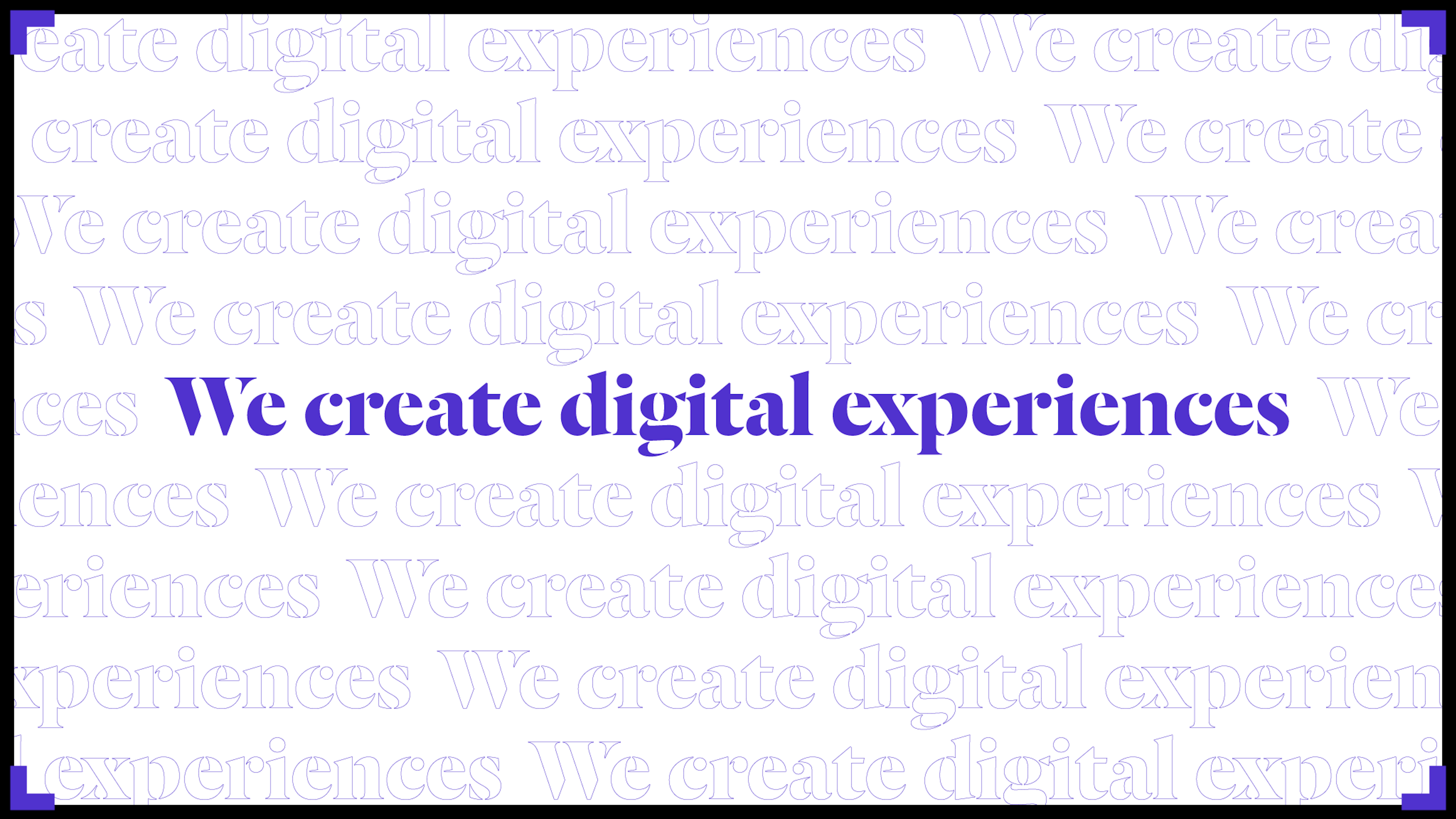Does your web copy welcome potential customers, or frighten them away? Do they learn something whilst reading it? Is it punchy and easy to follow? If the answer is no, it’s not doing its job.
If you want to be successful online, you need web copy that intrigues and inspires your readers so they’re enthusiastic to take the next step.
Read on for 7 ways to write great web copy.

1. Optimise for skim readers
Website visitors don’t read huge paragraphs of information anymore. They skim read.
They scan over one point to the next, ready to leave your website at any second if they don’t quickly find the answers they’re looking for.
If they can’t find the information quickly on your website, they’ll find it somewhere else (meaning you’ve just handed your competitor a potential customer).
Brands will often try to cram as much information in, not wanting to leave anything out. But research shows that website visitors will only read around 20% of the text on your page.
Copy should be short and get straight to the point, but still informative. That’s where great copywriting skills are needed.
Here’s a few quick tips on how to optimise for skimmers.
- Re-evaluate about where your content is on the page. Build a better user experience that helps your customers find information quicker and easier.
- Give your content meaningful structure. The information you’re giving should be coherent and in a logical order. Make it about the customer and target the problem they are facing, then showcase the benefits you offer and finish off with a strong call to action.
- Tell the user what to expect in each section. Use short, compact paragraphs, headings and subheadings. Bulleted lists are also great for short, essential bits of information!
When your web copy combines each of these components along with the correct tone of voice, it will instantly become more reader friendly and you’ll perform better online.
2. Headings are important
Headings are influential for several reasons when it comes to writing great website copy.
Firstly, headings organise important information on your page so that the topics and subtopics are in a logical order. Bold, concise headings improve the user experience so that website visitors can quickly scan the page and skip to the information they want.
Headings are used to establish hierarchy to a web page. They help search engines understand its structure and topic, and to understand the relevance of the web content.
Impact on SEO is another reason that headers are an important feature in your copy. Headers make it easier for crawlers to understand the relevance of your web content.
In terms of header hierarchy, H1 headers are the most important to SEO because it’s the title of the webpage and should be highly related to the content. Search engines will look to the keywords in the H1 header to categorise the topical relevance. With that, comes improved rankings!
Other headings from H2-H6 can be used to structure the content further. H2 headings are recommended next and H3-H6 headings are usually optional.
3. Keep CTAs in mind
Simply put, your call to action (CTA) is the chance to motivate your audience to take a real step towards becoming a customer.
CTAs serve as the link between the phases of the buyer’s journey. They tell your customer what they should do next, prompting them to take the next action.
Whether you want them to contact your business, book an appointment, buy a product, you must provoke this action by telling the customer to do so. The easier you make it to take the next step, the more people will do it.
Don’t assume the visitor will know what to do. Instruct your customer what to do next with an eye-catching button that illustrates the next phase of the buying cycle.
Customers do expect and want to see CTA’s. Many people depend on the action at the end of the copy to take the next step. CTAs make it easy for customers to know what you want them to do, which is great for them and great for business.
A CTA is the finishing touch on any type of copy. Your lead has read (or scanned) your content, and maybe unsure about taking the next step. Inserting a CTA at the right moment can push a potential customer in the right direction.
Next time you’re creating web copy, let your call to action do the talking and the results will follow.
4. Keep it simple
It’s rare that a reader will delve deeply into every word you write. They don’t have time. People want answers and they want it now.
Simple copy often gets the best results.
A large block of copy on a computer screen can be overwhelming (even more so on a mobile). Convincing paragraphs of 2-3 sentences keeps scrolling easy for the user.
Simple copy doesn’t mean you can’t get creative with your content, though. Keep it engaging by using short sentences and punchy verbs to really push through your message.
Leave the complex sentences behind. A general rule of thumb is to write as though you’re explaining to a twelve-year old. If you follow this, your web copy will be understood by everyone.
5. Know your keywords
The whole reason you’re writing copy for your website is because you want to attract (and eventually convert) potential customers, right? You want your business to show up in your customers’ search results.
Make sure you know the keywords you want to rank for and incorporate them within your copy. You want Google to know what you’re selling, and you do this by embedding keywords into each page of your site.
Make the most of your blog (you should definitely have one) by posting content that is clearly related to your industry. Let Google know what you’re selling, news, trends and new products by posting regular content with your trophy keywords weaved throughout the copy.
If you know your way around it, Google Keyword Planner is a great tool to research phrases that people are already searching for.
6. Make a good first impression with images and animation
A visitor to your site decides whether they like your website within a matter of seconds. If they’re confronted by a huge chunk of jargon-filled text, it’s more than likely that they’ll bounce straight off your page.
Don’t miss an opportunity to differentiate your business. Using images, illustration and animation is a vital visual aspect of marketing that keeps people engaged.
People get exhausted by reading a dense brick of words, but adding visual content throughout your copy can really help to break the text up and make it more appealing to readers.
Informative visuals such as illustrations and animations are a great way to illustrate points that appear in your text copy.
7. Get rid of the jargon
If it’s only industry professionals who can understand your web copy, then something is wrong. Keep your web copy user friendly by leaving out industry jargon or confusing words.
It might help you sound intelligent and professional, but it mainly alienates a lot of readers who don’t have time to Google each confusing word.
Swap jargon for familiar words to communicate your message instead. If you’re stuck for an alternate word, editors like Grammarly or an online thesaurus give word suggestions to help avoid overly complicated sentences.
There are several different ways to write great web copy, but these tips will help you craft your brand message in a simple, engaging way. If you're still stumped by the thought of copywriting, let us help. Contact us today and let our copywriting professionals work some magic.

